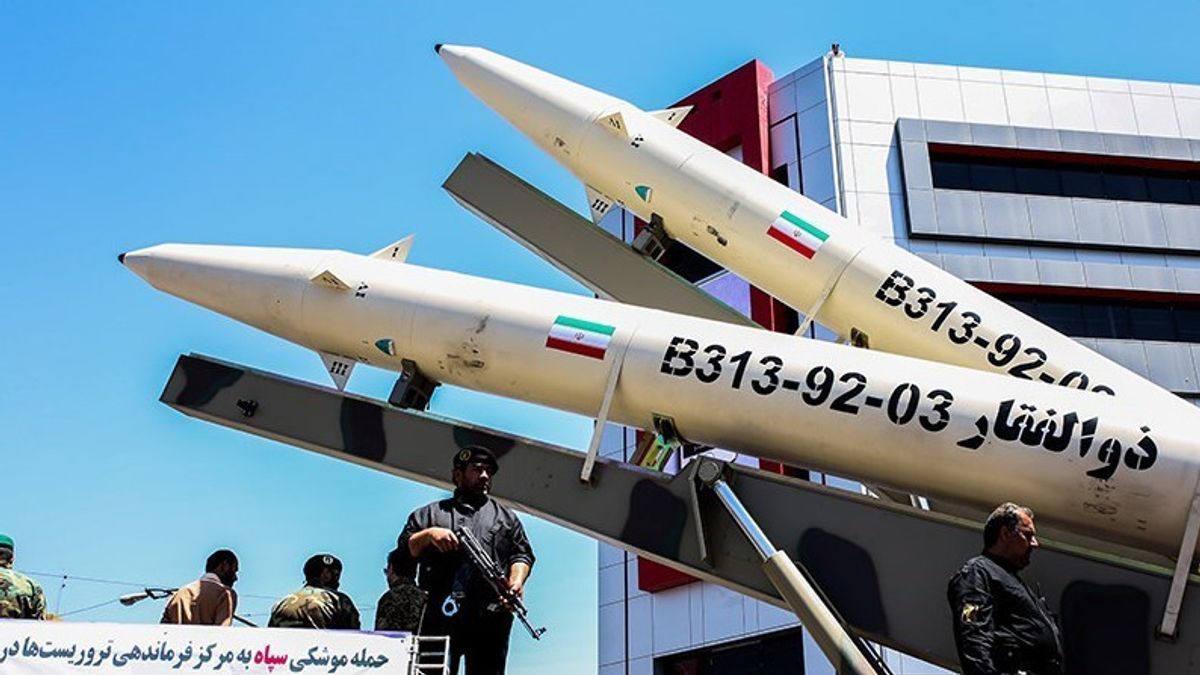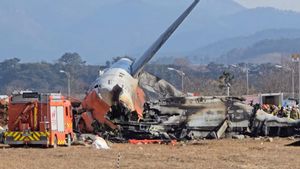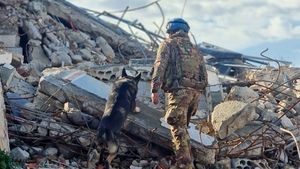JAKARTA - Analysis of satellite imagery obtained by the International Institute for Strategic Studies (IISS) revealed the construction of seven new silo sets, capable of storing Iran's new, sophisticated missiles.
As reported by The National News Friday, May 7. Defense analysts at IISS said the storage facility was placed on a steep mountain slope and was designed to accommodate dozens of weapons at a specific tilt, for precise targeting of missiles.
Satellite images are shown showing the launch site located in a mountainous area near the city of Haji Abad in southern Iran. The direction is set in such a way as to raise concerns for military airbases in Saudi Arabia and Bahrain.
The Haji Abad base has at least 14 of the newest Zolfaghar or Dezful missiles which can be accurate to within 10 meters, carrying a warhead weighing 350 kilograms.
The new development underlies concerns over Iran's growing supply of solid-fuel rockets, which allow it to fire weapons in a matter of minutes, versus time-consuming liquid-fuel missiles.

The threat from this base increases, as the analysis of the base, is controlled by the elite Islamic Revolutionary Guard Corps (IRGC).
"Satellite images show missile tubes hidden on a steep mountain slope, pointing very consistently over a large area of Saudi Arabia, potentially Riyadh, said IISS defense analyst Joe Dempsey, who led the study. The target area also includes several military bases, including the United States Air Force logistics base in Saudi Arabia.
"This strengthened site is very interesting, as it is the first to be developed specifically to launch their solid-fuel missile. We also believe it is for their long-range missile, based on several factors," the analyst continued.
IISS explained that the silo has walls as thick as five meters complementing the terrain that is already challenging to attack, with steep valleys. Allows the IRGC to react quickly and with increased accuracy by maintaining a fixed position.

The launcher is facing southwest and is thought to be in a 238 to 243-degree range, the direction that was taken in Riyadh and Bahrain. It is unclear whether the cylinders can be rotated for purposes elsewhere or not, or whether they are trained for specific target selection.
"The corresponding reduction in launch preparation time, from hours for liquid-fuel missiles, to minutes for solid propellants and other advantages, makes Iran less dependent on liquid-fueled missiles", said Dempsey.
The new base was reportedly completed in December 2019, with seven large hollow circular structures, for a pair of missiles accessible via underground tunnels.
Meanwhile, intelligence reports indicated each silo contained a pair of cylindrical objects about 12 meters long, some of which were camouflaged.
"Given its characteristics and protected placement, this is probably a horizontally mounted ballistic missile launch tube", the report said.
The English, Chinese, Japanese, Arabic, and French versions are automatically generated by the AI. So there may still be inaccuracies in translating, please always see Indonesian as our main language. (system supported by DigitalSiber.id)













